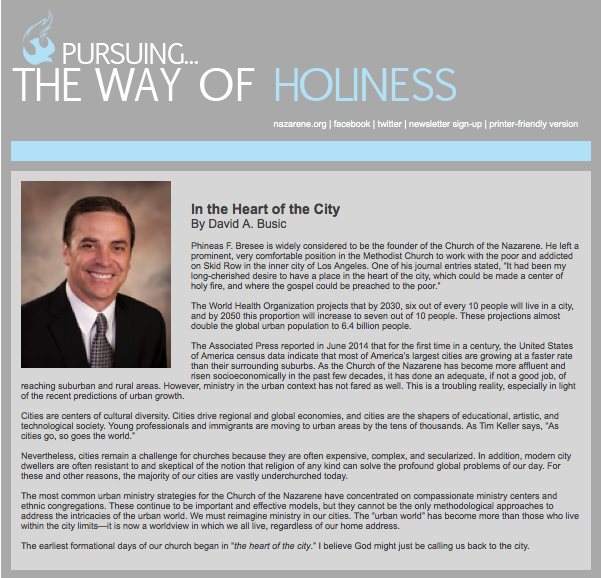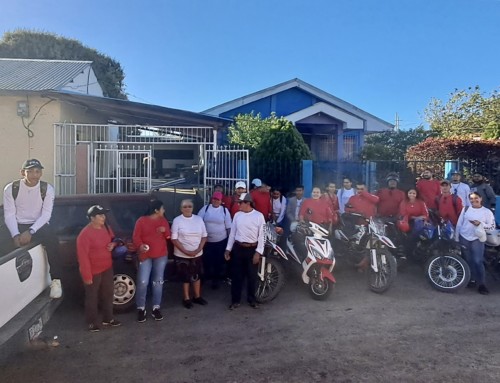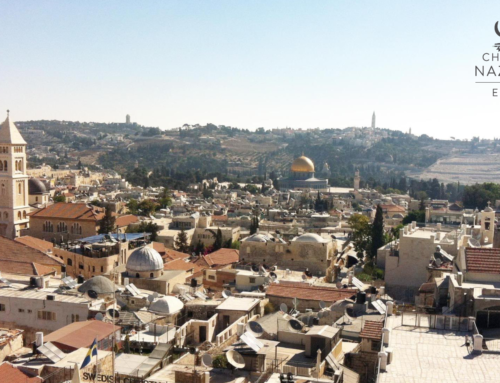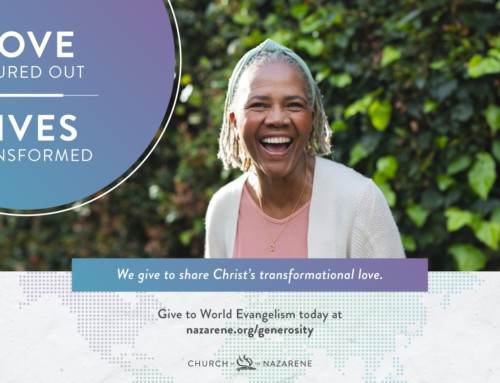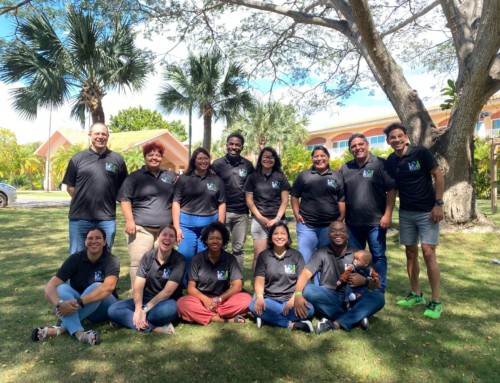By: David A. Busic
Phineas F. Bresee is widely considered to be the founder of the Church of the Nazarene. He left a prominent, very comfortable position in the Methodist Church to work with the poor and addicted on Skid Row in the inner city of Los Angeles. One of his journal entries stated, “It had been my long-cherished desire to have a place in the heart of the city, which could be made a center of holy fire, and where the gospel could be preached to the poor.”
The World Health Organization projects that by 2030, six out of every 10 people will live in a city, and by 2050 this proportion will increase to seven out of 10 people. These projections almost double the global urban population to 6.4 billion people.
The Associated Press reported in June 2014 that for the first time in a century, the United States of America census data indicate that most of America’s largest cities are growing at a faster rate than their surrounding suburbs. As the Church of the Nazarene has become more affluent and risen socioeconomically in the past few decades, it has done an adequate, if not a good job, of reaching suburban and rural areas. However, ministry in the urban context has not fared as well. This is a troubling reality, especially in light of the recent predictions of urban growth.
Cities are centers of cultural diversity. Cities drive regional and global economies, and cities are the shapers of educational, artistic, and technological society. Young professionals and immigrants are moving to urban areas by the tens of thousands. As Tim Keller says, “As cities go, so goes the world.”
Nevertheless, cities remain a challenge for churches because they are often expensive, complex, and secularized. In addition, modern city dwellers are often resistant to and skeptical of the notion that religion of any kind can solve the profound global problems of our day. For these and other reasons, the majority of our cities are vastly underchurched today.
The most common urban ministry strategies for the Church of the Nazarene have concentrated on compassionate ministry centers and ethnic congregations. These continue to be important and effective models, but they cannot be the only methodological approaches to address the intricacies of the urban world. We must reimagine ministry in our cities. The “urban world” has become more than those who live within the city limits—it is now a worldview in which we all live, regardless of our home address.
The earliest formational days of our church began in “the heart of the city.” I believe God might just be calling us back to the city.

